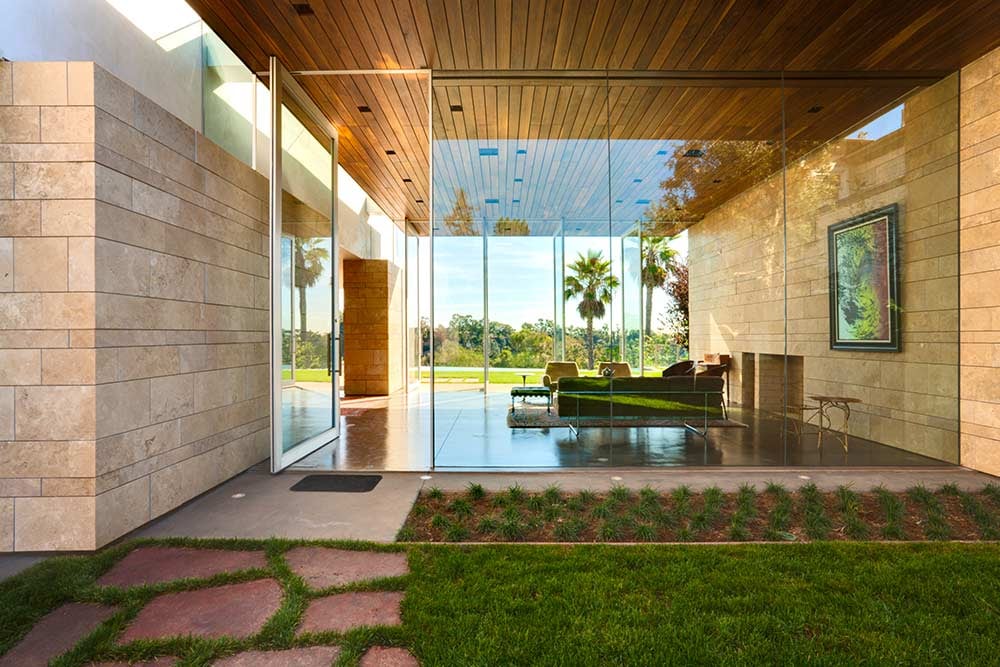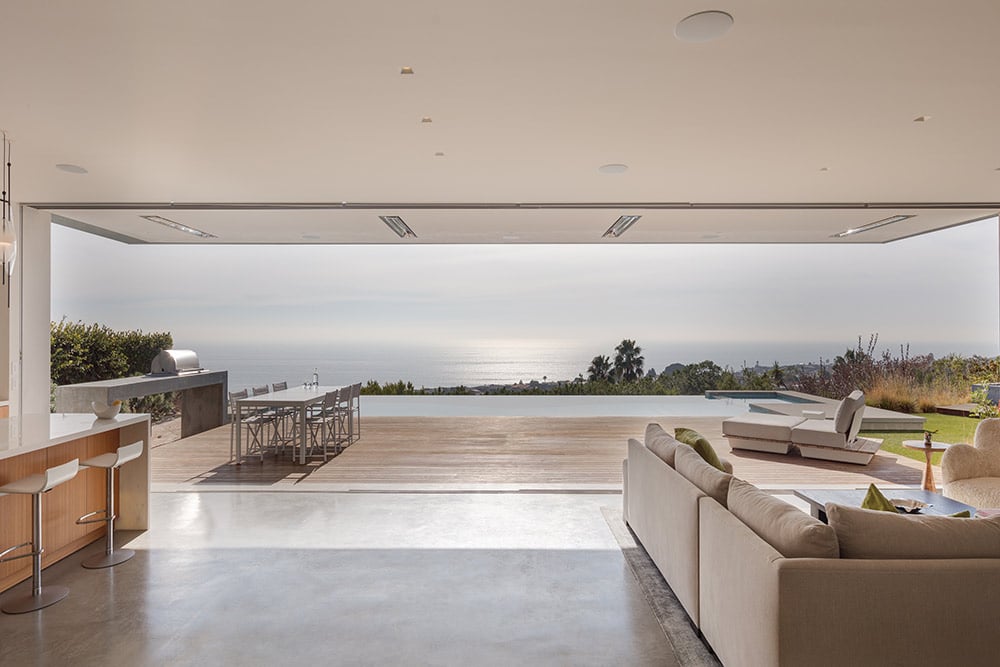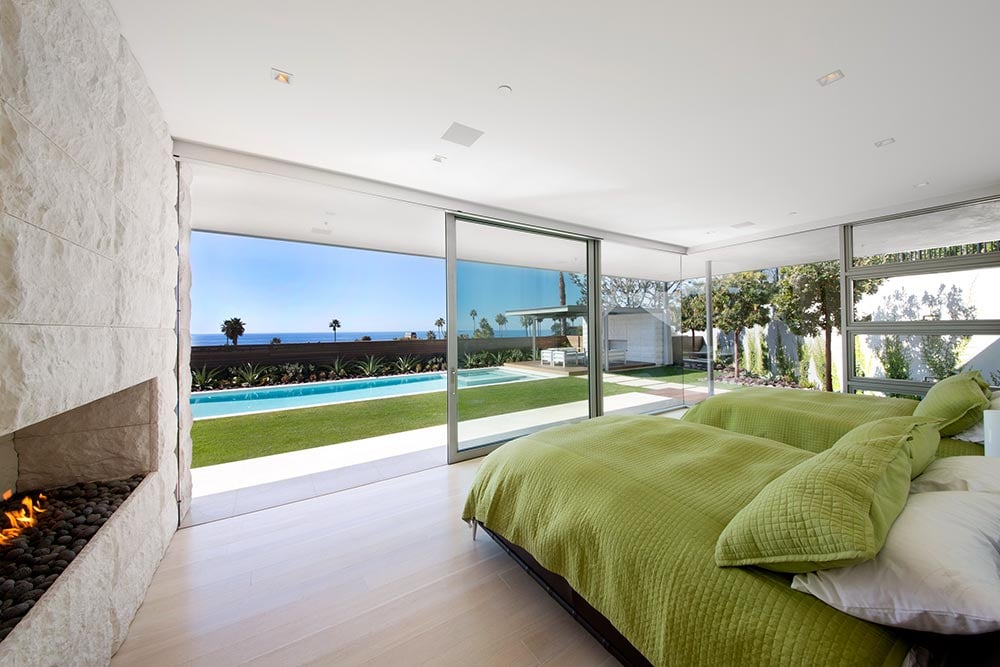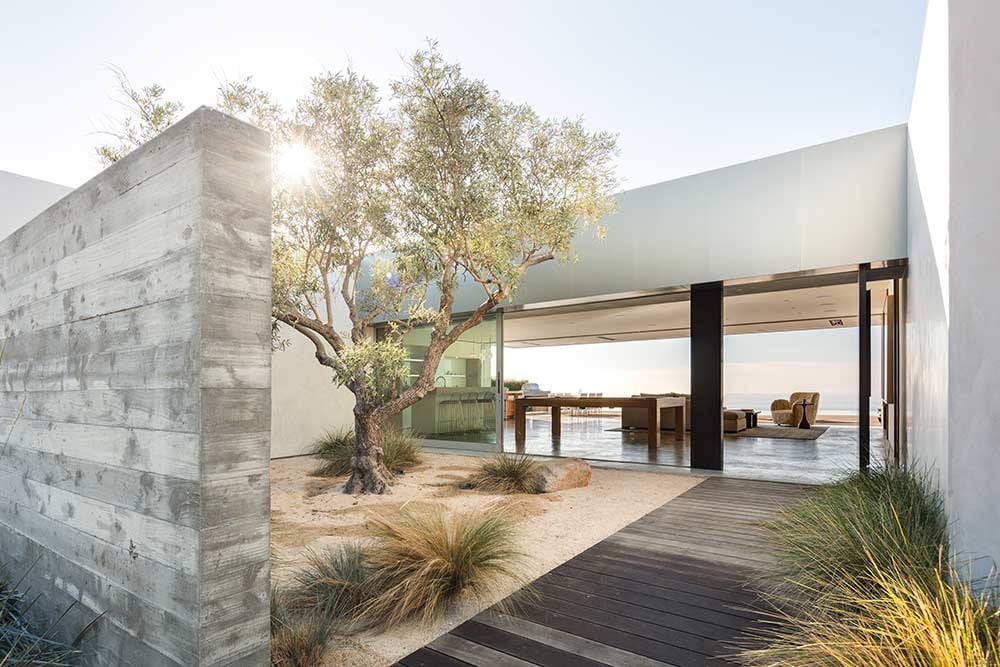
Modern residential design is often discussed as though it is some sort of monolithic aesthetic, the rules of which must always be followed. The reality, however, is that modern design can—and should be—flexible. Simply put, the tenets of the philosophy and design thinking should be carefully tailored to each individual project.
One of the most important considerations that will influence how the philosophy of modern design is applied to a project is location: Where the home will be built.
Are you considering designing and building a modern beach home? Below we discuss the key characteristics of modern design as applied to modern coastal living so that you can better understand how the tenets of modern design can be influenced by location.
Key Characteristics of Modern Coastal Design
1. The Material Palette
In modern residential design, the materials used to build a home are chosen purposefully so as to be beautiful while also “fitting in” with the home’s surroundings. In coastal design, when the beauty of the view is so integral to the project, it becomes increasingly important to choose materials that are subtle and subdued so as not to take away from the site itself.

At the same time, one must be aware of the realities of building on the shore, where the home will receive an abundance of wear and tear from the sun, wind, sand, and other elements. Materials must be chosen to either withstand corrosion and weathering, or to consciously embrace the phenomena.
2. Sense of Place
When someone chooses to build a home on the coast, it’s because they love the coast. The site itself is an important part of what brings joy to the homeowner. With this in mind, modern coastal design aims to impart a sense of place by bringing the ocean and shore into the home at every opportunity. The home needs to create a sense of place that centers you in the environment.

This can be accomplished by blurring the boundaries between the indoor and outdoor space of the home. If there is a view of the ocean, large, horizontally-aligned windows are extremely effective in engaging that view and bringing it into the home. Meanwhile, vertical windows can more effectively frame a stunning view.

It’s also important to engage the other senses as well. The sounds and smells of the ocean can be pulled into the space in a variety of ways. Small windows and skylights throughout the home, for example, can allow these crucial elements in. Likewise, an interior courtyard may not offer a view of the shore, but it does offer the sounds, smells, and even the feel of the ocean air, and can be an excellent meditative spot within the home.
3. Relaxed in Nature
Think about why you are building a home on the coast. What do you like about it? For many, it is that this is a relaxed and tranquil environment that the ocean offers. The home should seek to embody this same feeling.
With this in mind, modern coastal homes will often feature an abundance of natural light and ventilation and open, informal spaces that flow simply together.
Transitory spaces also become important. When the home is a respite against the stress and commotion of the city, it’s natural to wish to strip yourself of these stresses and tensions when you return home. Often, we will accomplish this by designing a layered entry sequence which slowly transitions the individual from the outside world to the rovate oasis that is their home.

4. Flexible Use
From a logistical view, many people who choose to build a beach home do so because they wish to use the home as a gathering place for friends and family. This means that at any time the home may need to accommodate either the inhabitants alone, or the inhabitants and their guests.
This is commonly achieved by designing rooms which have a function of their own—for example, an office or an entertainment room—but which can quickly and easily be converted into a guest room if and when the need arises. This flexibility of use is a trademark of modern coastal design.
Modern Residential Design Through a Coastal Lens
Many of the underlying principles that influence coastal design find their roots in the philosophy of modern design. It is important, however, for these principles to be approached through the lens of location. Where a project is built—whether a beach, a mountain, or a crowded downtown block—will influence how these principles are applied.

Written by Jessica Chang
Jessica Chang, AIA, is a graduate of the University of Southern California and an Associate at EYRC. She has led projects in both the commercial and residential studios since joining EYRC in 2018. With her passion for design, Jessica brings an energetic perspective and critical eye to the firm. Prior to her tenure at EYRC, Jessica worked at Morphosis Architects for four years on internationally recognized projects ranging from hotels and train stations, to embassies and city-scale masterplans. Her dedication to the field extends beyond design projects as she leads the Digital Practice Committee and co-leads the Design Justice Committee at EYRC. Her determination to innovate and promote equity makes her a valuable and empathetic architect.
